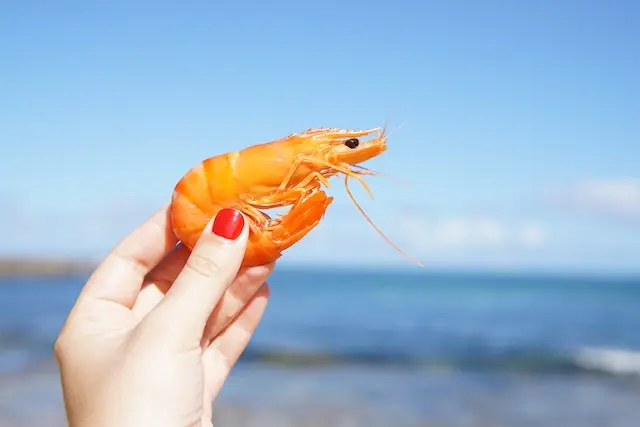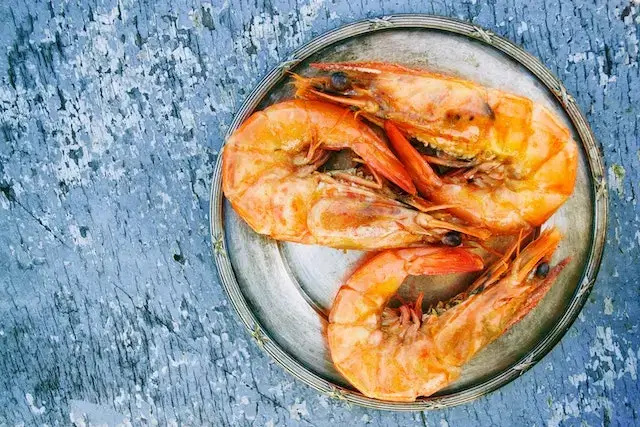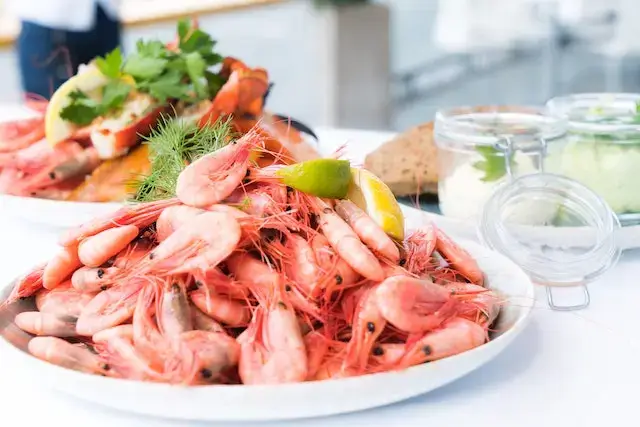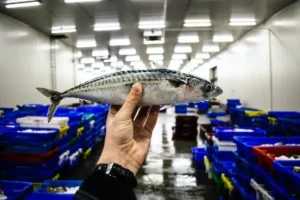We all love shrimp, don’t we? Who wouldn’t beam at a plate of sumptuous shrimp all spiced up for a beautiful evening meal?
But now that you are reading this, chances are someone told you that shrimp are bottom feeders and not very healthy to include in your meal.
Worry not, for here we are to clear your doubts and answer your question on whether it is true and how much shrimp you can eat. But first, let’s clear the first doubt.
Are shrimp bottom feeders? Read on to see.
What are bottom feeders? & What do bottom feeders eat?

Bottom feeders are those creatures that tend to spend a lot of time at the bottom of the sea and feed on parasites and other creatures that are normally found at the bottom of the sea, which is why they are called bottom feeders.
Lobsters, catfish, and shrimp are a few sea creatures that belong to this category.
The things that they feed on can include
Are shrimp bottom feeders?
Yes, shrimp are bottom feeders. As bottom feeders, shrimp play a vital role in aquatic ecosystems by consuming dead and decaying matter, such as crabs, clams, snails, fish, and worms.
This not only helps to keep the environment clean but also aids in regulating the local population of the creatures they feed on.
Apart from this, shrimp also like to feed on the skin of dead animals found at the bottom of the sea.
It is for this reason that one has to make sure that shrimps, before going into the utensil and over the fire, are first methodically and thoroughly cleaned.
Are bottom feeders bad for you?
Bottom feeders can be bad as the things that they eat can make way for contaminants in their bodies, which we, in turn, tend to eat.
These contaminants can be a result of these creatures lurking at the bottom of the sea, which can usually contain harmful chemicals like lead, mercury, petroleum products, and various other radioactive wastes, all a result of the activities that take place in the world we live in.
However, not all bottom feeders are bad and harmful.
Are shrimp bad for you?

Shrimp is not bad to eat. Shrimp can, on the contrary, be highly nutritious, low in calories, and high in protein, vitamins, and minerals.
With the presence of an antioxidant called astaxanthin, shrimp are known to protect one’s heart health.
However, this can be an exception for those suffering from allergies, as this can give rise to reactions like skin rashes, breathing difficulties, or other digestive issues.
Shrimp is considered one of the top nine foods in the world that are bad for those sensitive to allergens.
Yet, it is okay for those with allergies to enjoy some shrimp on the side once in a while (after all, who can resist shrimp?) as long as you are not eating it all the time.
Can you eat shrimp?
While some believe that shrimp is not a good choice for those with high levels of cholesterol, this, too, is untrue. Shrimp are known for promoting one’s heart health.
Eating shrimp can even boost one’s brain as they contain omega-3 fatty acids.
One needs to be careful about shrimp that are imported, as these can contain a higher amount of contaminants, for the fact that it is hard to regulate them.
Also, some of them can be farm-raised, giving them a greater amount of antibiotics present in them.
Wild-caught shrimp can be a safer option, as they generally remain fresh and they do not contain too many antibiotics, which are generally considered to be harmful to one’s health.
Must Read: Can fish smell human scent?
Are shrimp easy to digest?
Yes, shrimp are one of the best foods for those with digestive issues as they are one of the easiest to digest.
They require fewer enzymes in the digestion process and hence do not cause problems like gas and other intestinal issues in the digestion process.
It is for these reasons that shrimp are also known to promote and boost one’s gastrointestinal health.
Are shrimp shells bad for you?

While a lot of people believe that shrimp shells are high in calcium, it is generally not considered healthy to consume them as
Studies say that the calcium in these shells makes up for a very small amount, and the harms of it far outweigh the calcium one can benefit from by eating these shells.
Shrimp shells are known to cause allergies and, in some cases, even food poisoning, which only tells you why one needs to avoid shrimp shells.
Do shrimp have worms?
Yes, shrimps contain a kind of sucker worm called scutariella that tend to sit on their bodies. These worms belong to a class called temnocephalida and grow about 2 mm long, which means they cannot be seen unless one were to observe a shrimp through a magnifying glass.
While these worms are generally known to be harmless and simply live on the shrimp, it is still important that we do our part, and for this, make sure we soak them in a bowl of salt before we cook and eat.
Make sure that the salt you use is pure table salt.
Do shrimps have parasites?
Yes, shrimp can also contain various parasites. However, how much of these can be found in a shrimp depends on the kind of nourishment that the shrimp receives and what it has been feeding on.
Eating shrimp from restaurants that do not have a reputation for cleanliness is another mistake one shouldn’t make.
Shrimps, to be hygienic, need to be cooked at a degree of 145 degrees F.
Final thoughts
Now that you got all your answers go ahead and order that bowl of shrimp soup or whatever it is that is on your menu (and on your mind before that person in front of you scares you) and enjoy your meal to your heart’s content.
Are shrimp bottom feeders? Your question has left us hungry, too, and so while you enjoy your meal of shrimp, we move on to see what’s on our table today until the next time you have a question for us.
Until then, let’s enjoy our meals.
Q1. What fish are bottom feeders?
Ans: Bottom-feeding fish include species such as catfish, carp, loaches, plecos, and some species of eels. These fish primarily feed on dead and decaying matter, algae, and small invertebrates found on the ocean or river floor.
Q2. What fish is not a bottom feeder?
Ans: Fish that are not bottom feeders include species like tuna, salmon, mackerel, and many types of reef fish. These fish typically feed on smaller fish, plankton, or other marine life higher up in the water column rather than foraging at the bottom.



